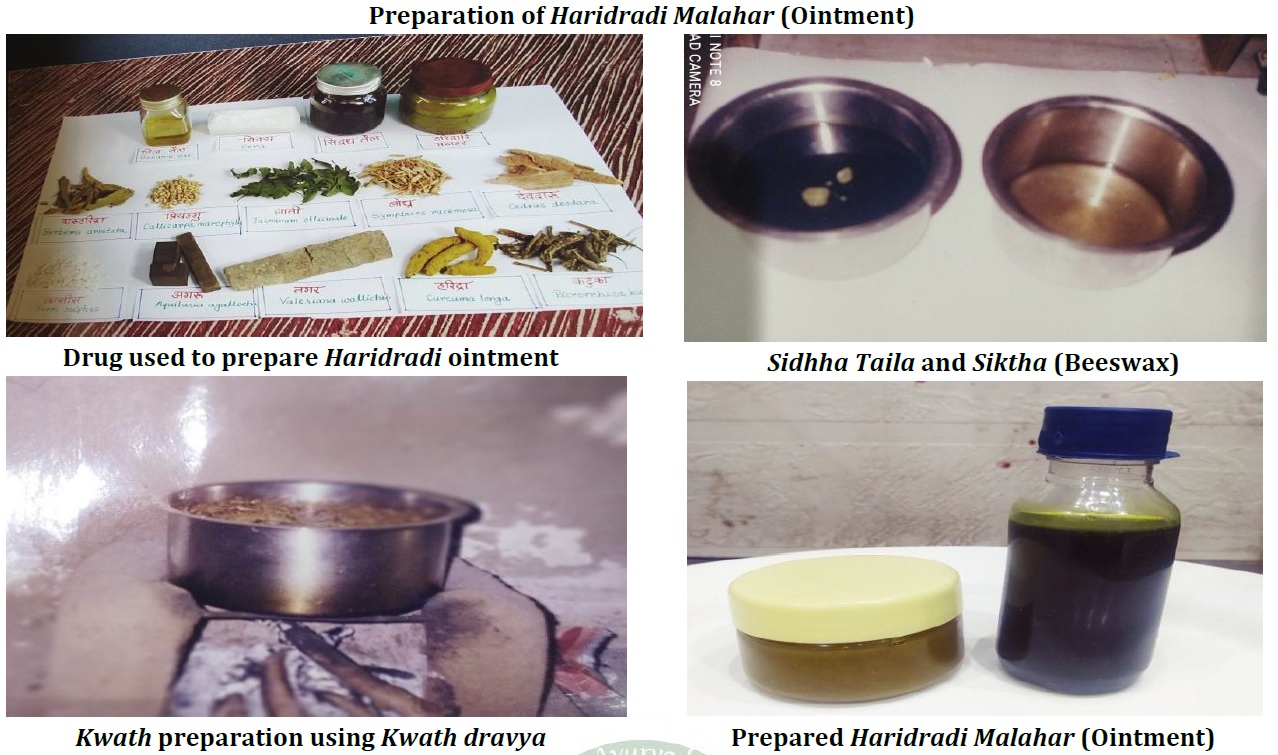A Clinical Study of Haridradi Malhar (Ointment) in the Management of Nija Vrana
Abstract
The Vrana (ulcer) is considered the core subject of Shalya tantra. Vata, Pitta and Kapha are aggravated by their respective causative factors that get lodged in the exterior of the body to give rise to Nija vrana (endogenous ulcer). Nija vrana are frequently encountered problem in present era produced commonly by the morbid Doshas of the body. In the present study, Haridradi taila (ointment) is selected which is mentioned by Acharya Sushruta in the context of Vrana. It contains Kasis, Kutaki, Jati, Haridra, Tagar, Agaru, Daruharidra, Deodaru, Priyangu and Lodhra. These ten ingredients possess the properties of both Shodhan and Ropan (cleaning and healing). It was used topically in the type of chronic wounds daily one time for 30 days or till the healing of the wound, whichever is earlier. It is a single-blind clinical study where 20 patients were selected and divided into two groups 10 patients each. Experimental group patients wounds were treated with a dressing having Haridradi ointment and control group patients' wounds were treated with Framycetin ointment and dry gauze bandaging. It reduces pain, burning sensation, itching, decreases discharge, oedema and helps in gradual improvement in floor and granulation tissues as compared to control group. Nija vrana (chronic wounds) management with Ayurvedic remedies is one of the major areas of research, hence it can be speculated that Haridradi ointment possesses sufficient efficacy in Vrana shodhan and Vrana ropan (cleaning and healing of the wound) without creating any adverse effect
Downloads

Copyright (c) 2022 International Journal of Ayurveda and Pharma Research

This work is licensed under a Creative Commons Attribution-NonCommercial-ShareAlike 4.0 International License.






